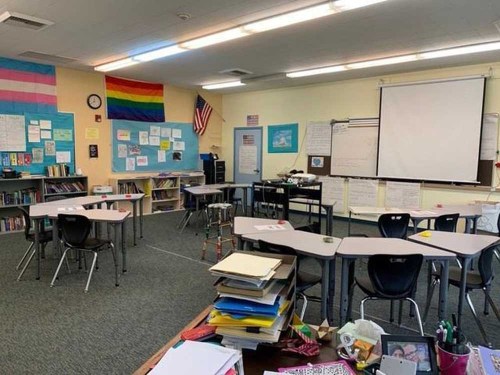Oregon considering allowing students to be 3 feet apart, not 6, at school
Published 11:30 am Sunday, March 14, 2021

- Oregon is considering letting schools pack students more tightly into classrooms, which would allow students to get more hours of in-person instruction, but will move slowly even if the best science says it would be safe, a top public health official said Friday, March 12.
SALEM — Oregon is considering letting schools pack students more tightly into classrooms, which would allow students to get more hours of in-person instruction, but will move slowly even if the best science says it would be safe, a top public health official said Friday, March 12.
The key would be to reduce required distancing from 6 feet to 3 — a step Oregon is considering but would only allow on a gradual phased-in basis, State Epidemiologist Dean Sidelinger said during a news conference hosted by Gov. Kate Brown.
Trending
Oregon’s current rules require students and employees to remain 6 feet apart at all times when inside a school building, meaning a classroom can only accommodate one student or teacher for every 36 square feet. That has meant many classrooms can accommodate just 10 or 12 students, meaning only half or one-third of students can physically be in class at a time.
The upshot is that the vast majority of Oregon students are now or soon will be allowed to take part in in-person instruction for only half days or alternating days at most. Many Portland-area schools have said they will offer students as few as five hours a week of in-person learning.
The Centers for Disease Control and Prevention set six feet of separation as the standard in all indoor spaces. But the World Health Organization says a distance of 3 feet — or rather its close metric equivalent, a meter — is safe when people wear masks, particularly when rates of community transmission are low. Several states, including Massachusetts and Colorado, already allow schools to space students three feet apart.
Reducing the minimum required distance to three feet means schools can give each person just nine square feet in a classroom, gym or hallway — allowing four times as many people into school spaces.
That is why Oregon school districts that are already offering in-person instruction, including Grants Pass and Klamath County, have officially requested permission to switch to three-foot spacing.
Sidelinger did not offer hope that would happen in the near term. “We will see about making changes to our current guidance” and may phase in new rules that would allow schools to operate more like they did in pre-pandemic times, “particularly in the fall,” he said. “We may need to ease into it.”
Trending
The question of 6 feet versus 3 is playing out in scientific and political circles around the nation, including in Chicago. Illinois health officials changed their rules this week to allow masked people to come as close as three feet inside schools. But the Chicago Teachers Union insists the 6-foot standard should maintained in the city’s public schools.









